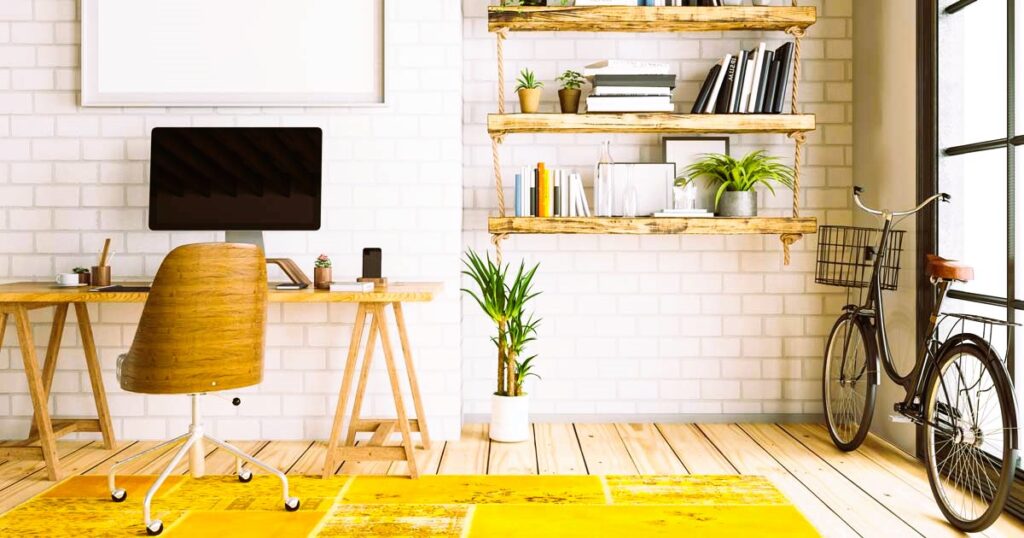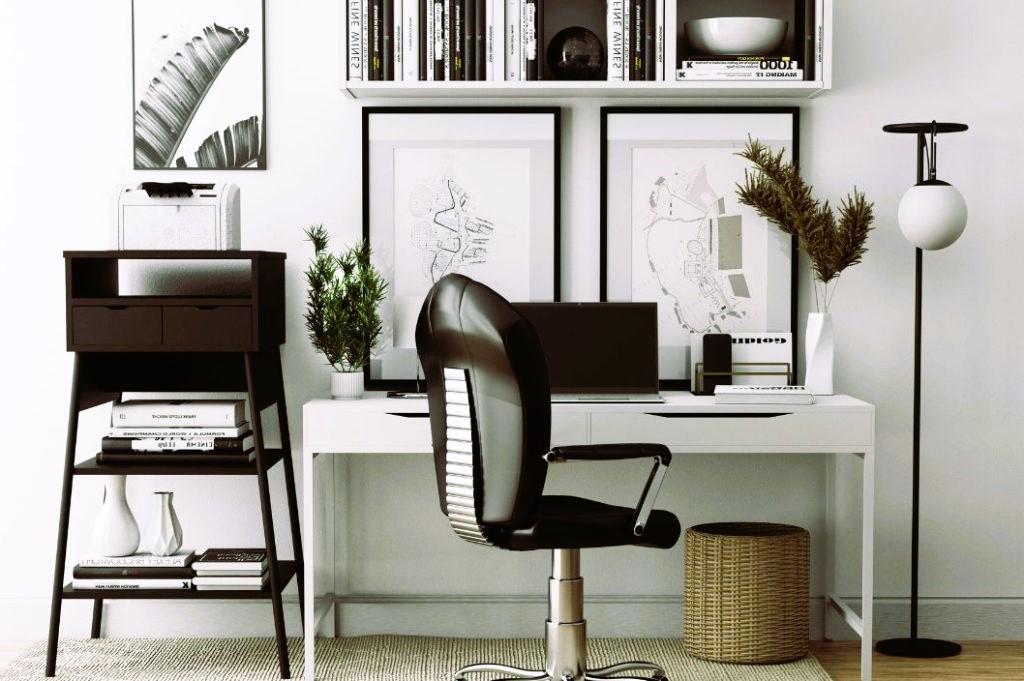In recent times, the concept of working from home has become more prevalent than ever. With this shift, the importance of creating a functional and aesthetically pleasing home office has gained significant attention. Designing a space that seamlessly blends productivity with aesthetics is crucial for fostering a conducive work environment. In this exploration, we’ll delve into the key elements of designing a home office that harmonizes functionality and style.
Understanding the Dual Purpose:
A home office serves a dual purpose — it’s a space for work, productivity, and focus, but it’s also a part of your home, where aesthetics and personal style should be considered. Striking the right balance between these aspects ensures that your home office becomes a place where you can be both efficient and inspired.
Ergonomic Furniture for Comfort and Health:

Investing in ergonomic furniture is the foundation of a productive home office. A comfortable chair, a spacious desk, and proper lighting contribute to a workspace that supports your physical well-being. Consider adjustable chairs, sit-stand desks, and task lighting to enhance comfort and reduce the risk of strains and discomfort during prolonged work hours.
Optimal Space Planning:
Effective space planning is crucial for maximizing functionality. Consider the layout of your home office to ensure that it allows for smooth movement and accessibility. Keep frequently used items within arm’s reach and create dedicated zones for different tasks, such as a focused work area and a space for virtual meetings.
Aesthetic Appeal for Creativity and Motivation:
Aesthetics play a significant role in creating an inspiring work environment. Choose a color scheme that resonates with your personal style and promotes a positive atmosphere. Consider incorporating artwork, plants, or decor items that evoke creativity and motivation. A visually pleasing space can have a positive impact on your mood and productivity. Did you like the article? Read also about the Art Deco Renaissance.
Technology Integration for Seamless Workflows:
In the digital age, technology is at the heart of most home offices. Integrate technology seamlessly into your design, considering factors such as cable management, device charging stations, and efficient placement of outlets. This ensures that your home office supports modern work requirements without sacrificing aesthetics.
Natural Light and Proper Lighting:
Natural light is a game-changer for any workspace. Position your desk near windows to harness natural light, which not only reduces eye strain but also boosts mood and energy levels. Complement natural light with task lighting to illuminate specific work areas and create a well-lit and inviting atmosphere.
Organization Solutions for Clutter-Free Spaces:

An organized workspace is essential for maintaining focus and productivity. Invest in storage solutions that keep clutter at bay. Shelves, cabinets, and desk organizers can help create a tidy environment. Consider incorporating stylish storage solutions that blend seamlessly with your overall design.
Incorporating Personal Touches:
While maintaining a professional work atmosphere is crucial, adding personal touches to your home office can make it a more enjoyable space. Display meaningful items, family photos, or artwork that brings a sense of warmth and familiarity to the environment. Personal touches can contribute to a sense of belonging and comfort during work hours.
Design Standards and Guidelines:
When designing a home office, it’s essential to consider industry standards and guidelines to ensure that your space meets functional requirements. Platforms like Wikipedia provide valuable information on home office design standards, ergonomics, and best practices. By adhering to these standards, you can create a workspace that not only looks great but also supports your health and productivity.
Designing a home office that seamlessly merges productivity with aesthetics is an art. By carefully selecting ergonomic furniture, optimizing space planning, incorporating personal touches, and considering design standards, you can create a workspace that enhances your well-being and inspires your work. Remember that your home office is a reflection of your professional and personal identity, making it a space where you can thrive both creatively and productively.
